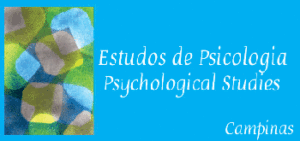Jacques Grégoire, Professeur Ordinaire, Université Catholique de Louvain, Belgium
 Stimulating scientific creativity means not only giving a boost to creative thinking, but also taking into account the factors that put a brake on creativity. A lot of research projects are not very creative, following the rules of the dominant theories. A research project based on a well-known theory is less risky than a project based on an original theoretical framework, and can be more easily approved and financed. This is the main theme of the article “Overcoming obstacles to creativity in science: A challenge for education”, published on Estudos de Psicologia (Campinas) (Vol. 35, No. 3).
Stimulating scientific creativity means not only giving a boost to creative thinking, but also taking into account the factors that put a brake on creativity. A lot of research projects are not very creative, following the rules of the dominant theories. A research project based on a well-known theory is less risky than a project based on an original theoretical framework, and can be more easily approved and financed. This is the main theme of the article “Overcoming obstacles to creativity in science: A challenge for education”, published on Estudos de Psicologia (Campinas) (Vol. 35, No. 3).
To understand such a tendency and to rely more heavily on well-known theories, we have to understand the obstacles to creativity. These obstacles lie inside and outside the researcher’s mind. The most important obstacles inside the researcher’s mind are epistemological obstacles and cognitive bias. The French philosopher Gaston Bachelard introduced the concept of “epistemological obstacle,” which is knowledge coming from previous experiences and theories preventing the acquisition of new scientific knowledge. The observation of epistemological obstacles is very common during the child’s development of scientific knowledge. For example, when children learn the sequence of natural numbers, they observe that the largest numbers are also the longest ones, i.e. with more digits (e.g. 5 < 15 < 115). But when they discover the rational numbers, such a general rule is no longer true. A number with two digits can be larger than a number with four digits (e.g. 0.5 > 0.255). Because of their representation of natural numbers, children used to give a wrong answer when they have to select the larger between two rational numbers, choosing the number with the most digits. Cognitive biases have been extensively studied by social psychologist. It is a systematic deviation from rationality in judgment, which leads to incorrect statements. No researcher is immune to cognitive bias, which can be an obstacle to his/her creativity (GRÉGOIRE, 2016). Among the types of cognitive bias, confirmation bias is a common error. Instead of taking into account all the observed events, we only select the information that confirms our initial hypothesis, while the alternative hypotheses are not considered. The most important obstacles outside the researcher’s mind are the social norms, i.e. the pressure for the scientific community and, sometimes, the whole society, to conform to the dominant scientific model, which is called “normal science” by Kuhn (1962) in his famous book The Structure of Scientific Revolutions. Scientific norms are too often supported by the current assessment system of scientific projects and productions. Scientific creation often needs what Kuhn call a “paradigm shift,” which is very well expressed by Niels Bohr in his famous quotation: “Electricity was not invented by trying to improve the candle.”
To move a car, we have to accelerate, but we first have to remove our foot from the brake. Developing and stimulating scientific creativity is an important goal, but it will remain insufficient if we do not work to overcome the obstacles to creativity. The first obstacles are inside the researcher’s mind. Therefore, we should first work at this level. Researchers should learn to question their initial knowledge related to their initial experiences and the dominant scientific models they have learned. Scientific education should spend more time on questioning initial notions and on history of science, especially its conflicting aspects. Researchers should also be aware of judgmental bias and learn to identify their own cognitive bias. Creative scientists should enjoy taking risks. Such behavior is not easy because their scientific environment too often has an aversion to risk. Researchers know that a paper presenting a study based on a known theory and using a classical method will have more chance of being published than a paper based on an original theory or using a new method, which is mastered by few people. Therefore, they avoid risk taking and prefer to stay on the rails of normal science. Scientific education should increase the value of risk and serendipity. Students and young researchers should be stimulated to explore, having the possibility to go in a wrong direction and make mistakes. They should have the opportunity to investigate alternative pathways and to be surprised.
References
GRÉGOIRE, J. Understanding creativity in mathematics for improving mathematical education. Journal of Cognitive Education and Psychology, v. 15, n. 1, p. 24-36, 2016. ISSN: 1810-7621[reviewed 20 September 2018]. Avaliable from: https://www.researchgate.net/publication/294255199_Understanding_Creativity_in_Mathematics_for_Improving_Mathematical_Education
KUHN, T. S. The structure of scientific revolutions. Chicago: University of Chicago Press, 1962.
To read the article, access
GREGOIRE, J. Overcoming obstacles to creativity in science. Estud. psicol. (Campinas) [online]. 2018, vol.35, n.3, pp.229-236. ISSN 0103-166X. [viewed 7 December 2018]. DOI: 10.1590/1982-02752018000300001. Available from: http://ref.scielo.org/dn8ykw
External link
Estudos de Psicologia (Campinas) – ESTPSI: www.scielo.br/estpsi
Como citar este post [ISO 690/2010]:














Recent Comments